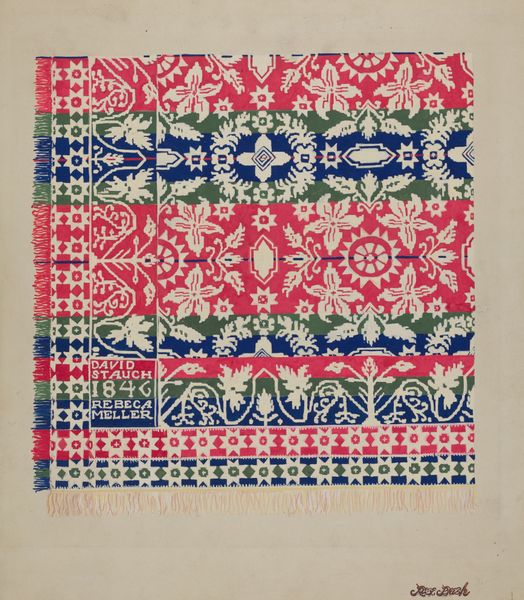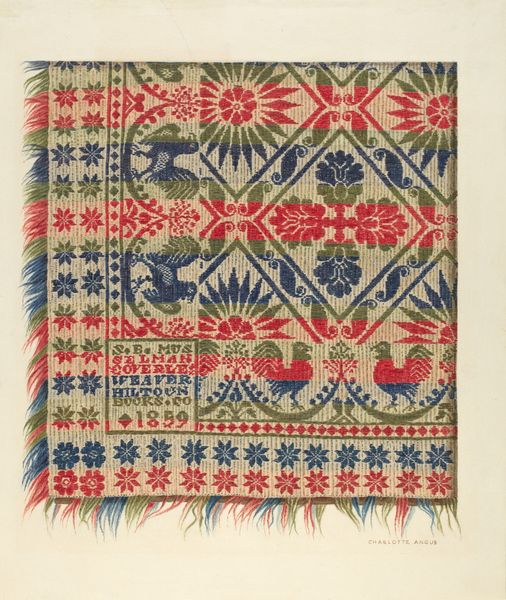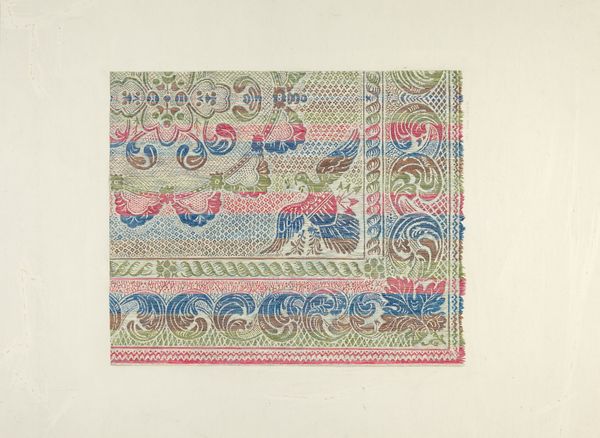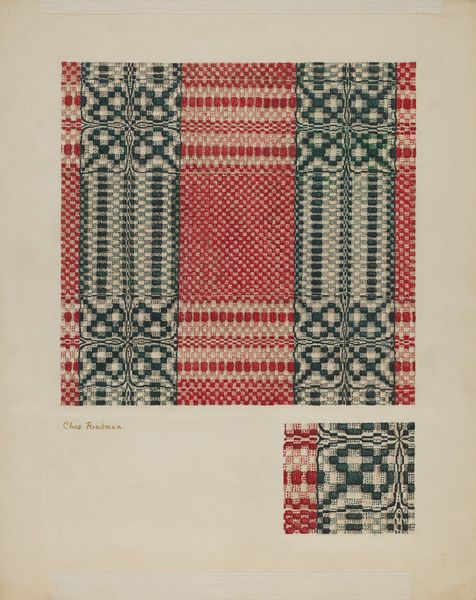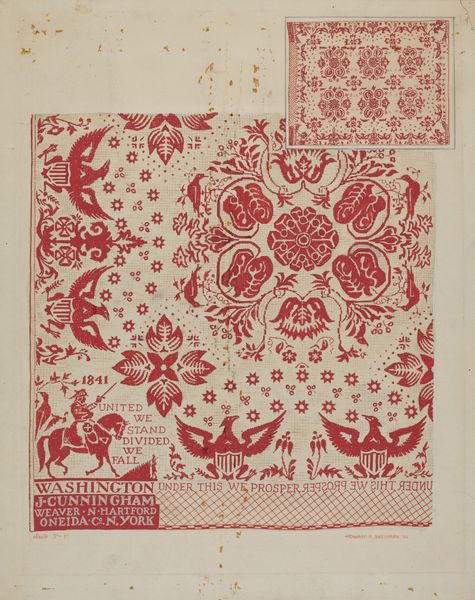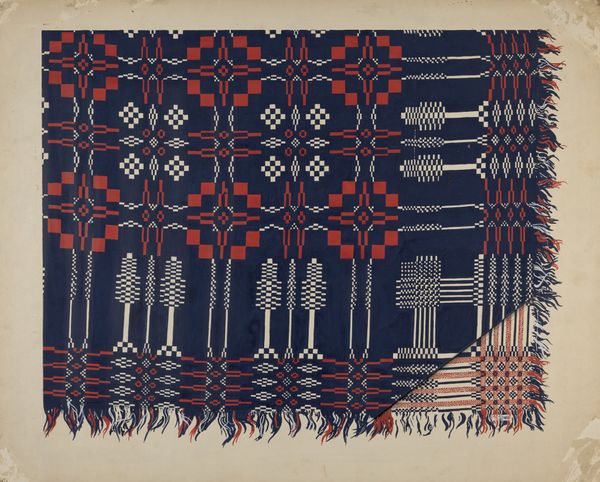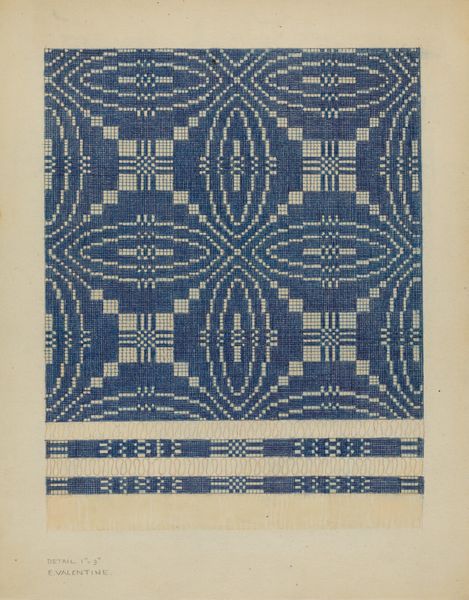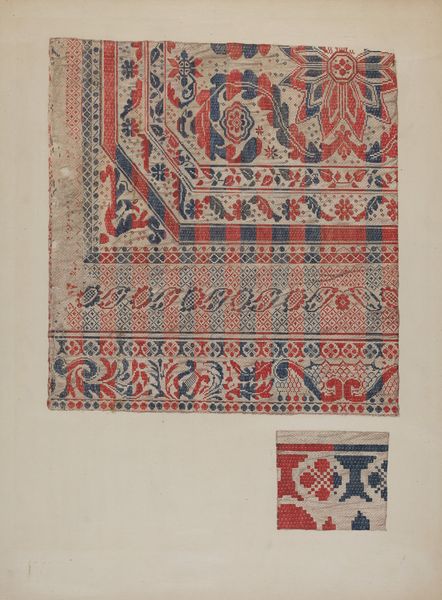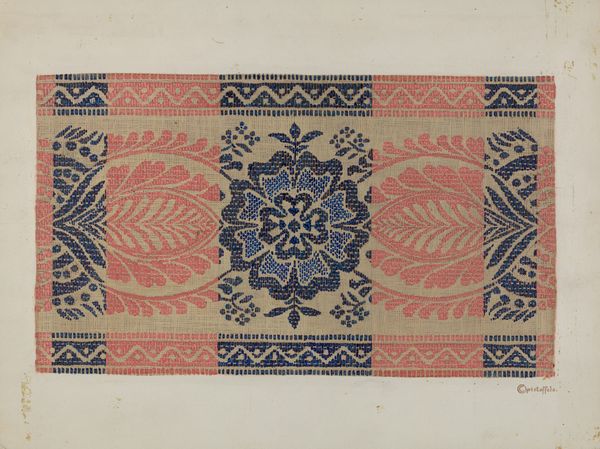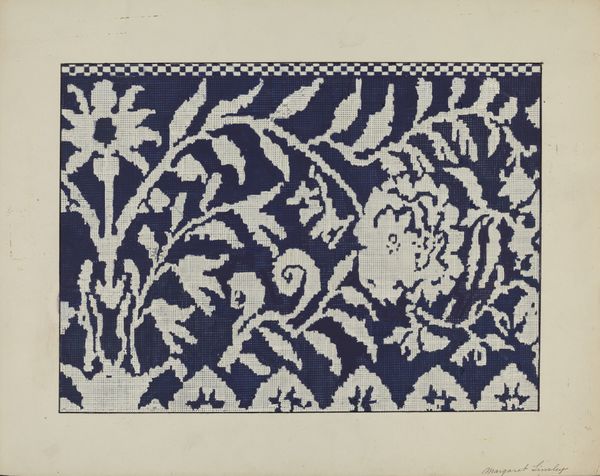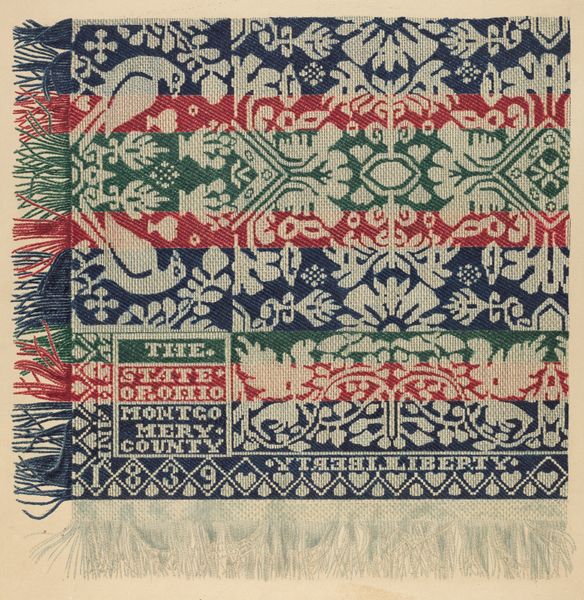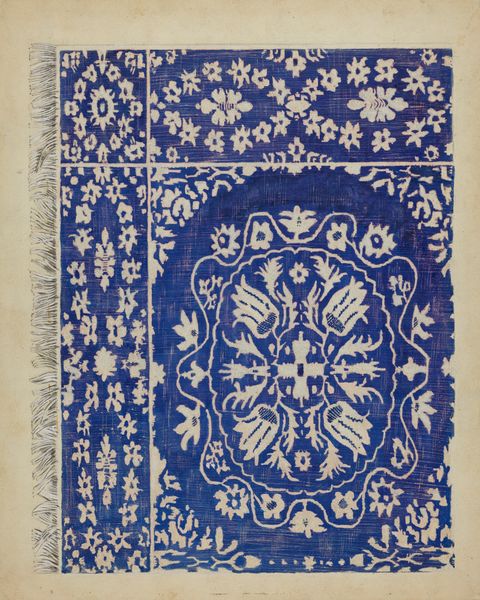
weaving, textile
#
weaving
#
textile
#
geometric pattern
#
folk-art
#
organic pattern
#
geometric
#
pattern repetition
#
decorative-art
#
imprinted textile
Dimensions: overall: 45.5 x 60.9 cm (17 15/16 x 24 in.)
Copyright: National Gallery of Art: CC0 1.0
Editor: Here we have "Woven Coverlet," a textile from around 1840. What strikes me immediately is the intricacy of the weaving; it feels almost like a coded language. How do you interpret this work, especially in terms of its cultural context? Curator: It's more than just decoration, isn't it? Textiles like this served crucial functions, yes, keeping people warm, but they also were a powerful means of communication, especially for women. Think about who typically made these coverlets. Often, it was women within the domestic sphere who were otherwise excluded from formal avenues of expression or power. This piece could represent a woman asserting her presence, inscribing her identity - perhaps even challenging social norms - through her craft. Editor: I hadn't considered it that way. The inscription “This coverlet belongs to me, John Gernhort, 1841, Pennsylvania” threw me off; why have his name if it’s a woman’s work? Curator: That is interesting! Is John Gernhort the owner, the husband? Consider it this way: whose stories get told and whose are erased? This object forces us to confront these silences and think about how the history of textiles, the history of craft, is interwoven with the narratives of those who often remain unseen and unheard. This "signature" could be a clue for further inquiry, pointing us towards deeper investigation on the artist’s agency, social position and maybe even activism within their family or local social structures. Editor: So, by looking at this coverlet, we're not just admiring the craft but also uncovering a piece of social history. Curator: Precisely! We are engaging with the maker’s socio-political landscape as we celebrate the skill required to produce such beauty. It invites a deeper look into identity and social issues of the period. Editor: That gives me a lot to think about, and I definitely see this coverlet in a new light. Thank you.
Comments
No comments
Be the first to comment and join the conversation on the ultimate creative platform.
